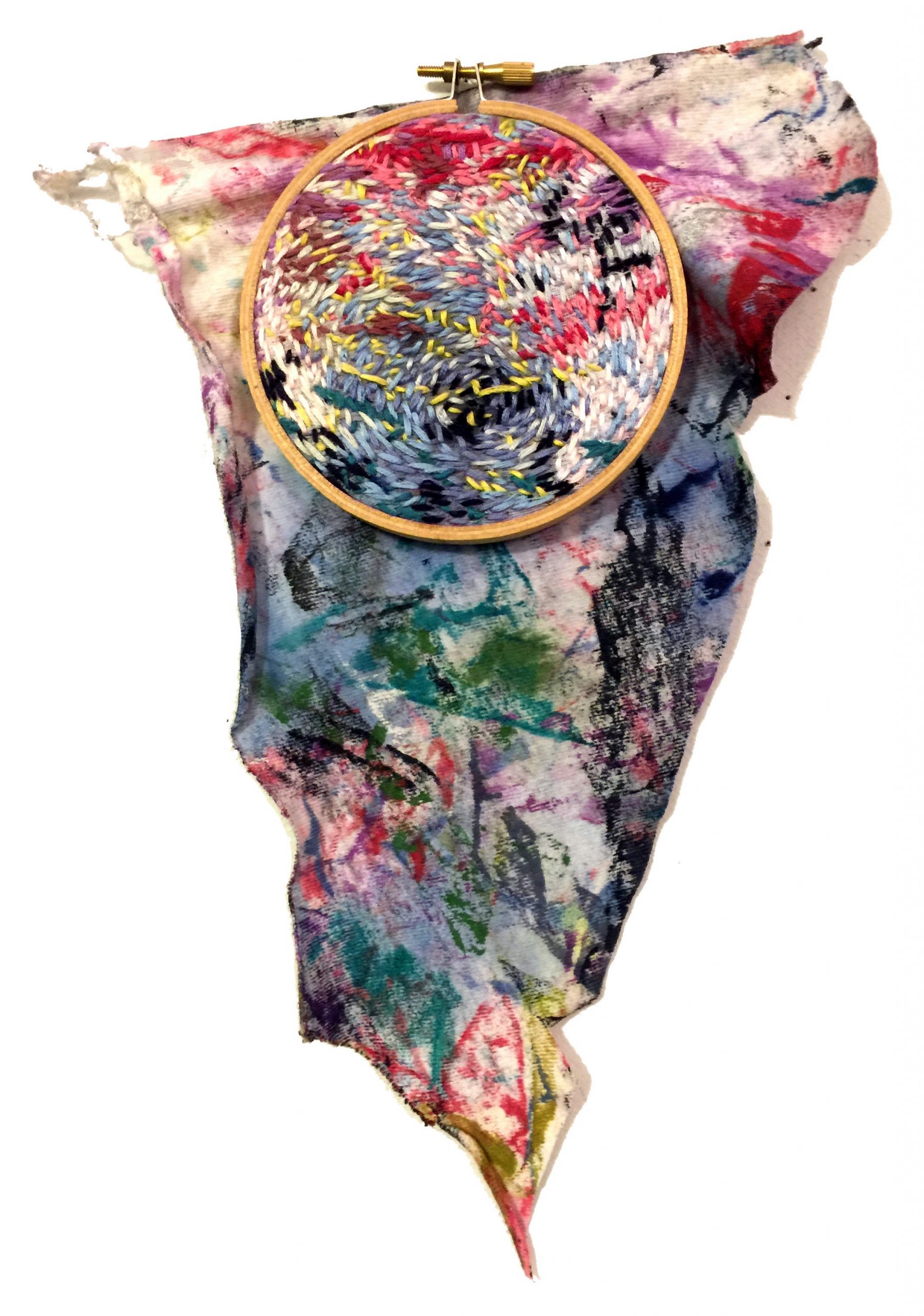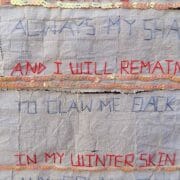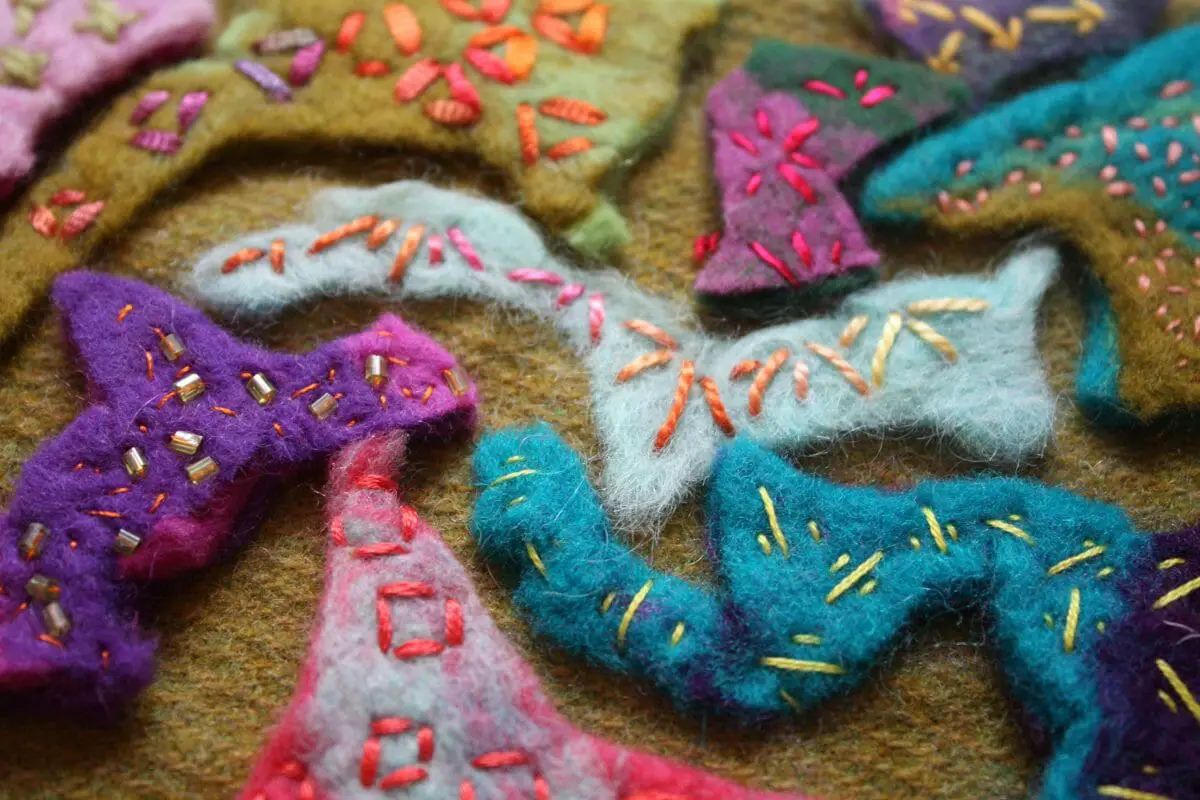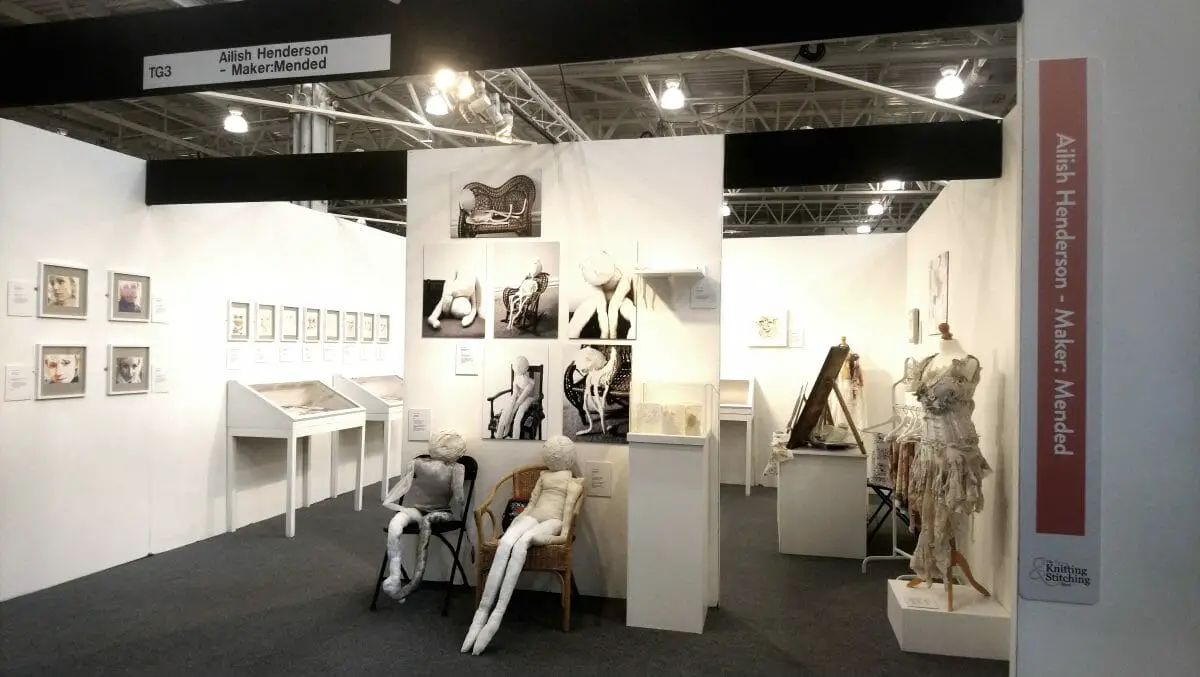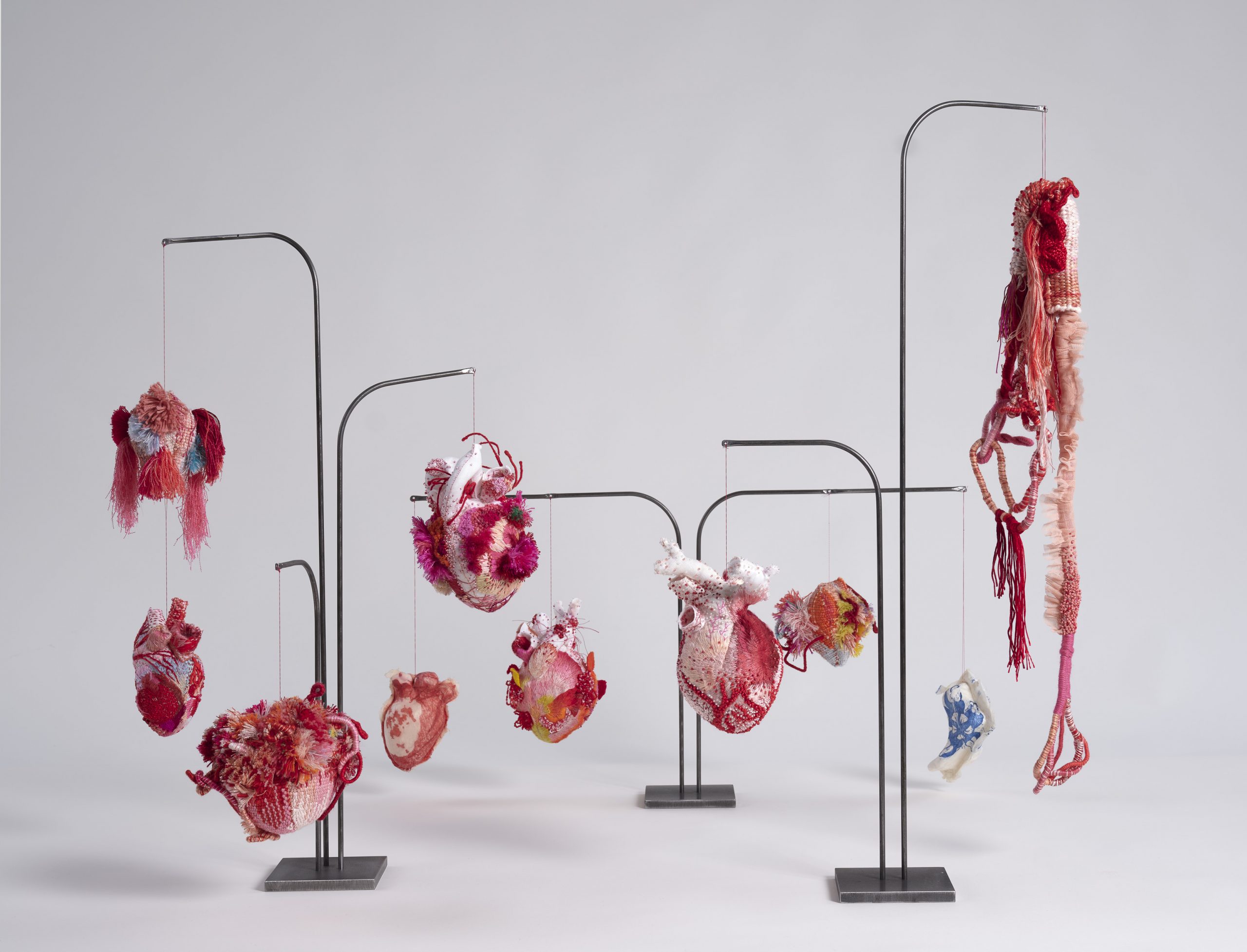
Welcome to the Ailist, where we look inside the world of textile arts with artist profiles, real life experiences at shows and workshops to help you plot your own path in this creative sector! I’m Ailish Henderson, thank you for joining me!
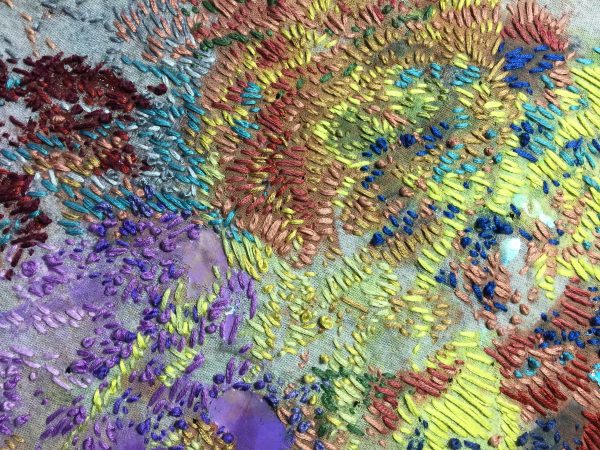
Recently when looking for some inspiration myself, I came across the work of Patricia Brown. I was drawn to her work, as we both have a Fine Art background rather than one focused initially on textile art. I loved the randomness of her stitches and how colourful her pieces were, yet they didn’t feel overworked or too in your face. That being said, they ain’t boring, they are one offs. Fine Art x Textiles, can it work? Let’s investigate…..
Who is Patricia Brown?
Patricia Brown is a practicing artist, who has found a way to merge her love of both Fine Art and Textiles, culmulating in a collection of unique pieces – no two are ever the same due to the techniques she uses, such as paint and intuitive stitch to develop a pattern of markings on the surface of the cloth.
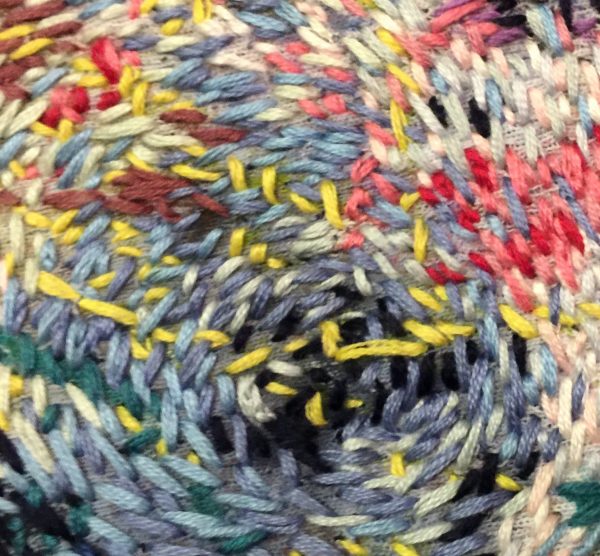
Patricia is an Artist Member of State of the Art Gallery in Ithaca, New York and is known for her exhibitions of drawings, paintings, collages and mixed media assemblages in galleries and museums across New York. She was awarded Art Educator of the Year through her school based work and has co-authored a book with a poet, showing that art can merge with other art forms.
From Rags To Riches
Basically, left over rags, which have been dyed, painted and then stitched to create colourful impressionist masterpieces. The works are often titled simply, i.e. Remnant 4. Not pretentious at all, the works are literally developed from left overs of a kind, her actual pre-loved paint rags which back in the day were her own clothes. In order to get an idea of the size, I found the embroidery hoops vital, as they create a frame both for her finishing and exhibiting, also for the creating of the work in the first place. We or at least most of us have had an embroidery hoop in our focus at some point, so can imagine what these pieces look like in real life.
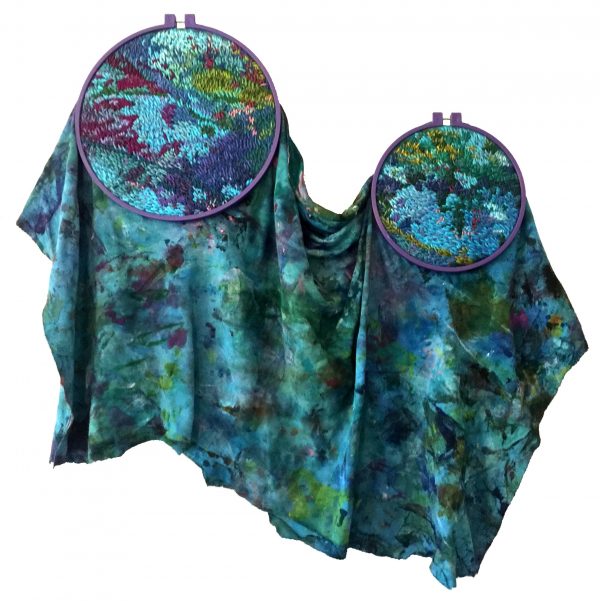
Personally I love the drape of the cloth, how it has some structured areas with the framed parts in hoops and the rest allowed to go its own way. This makes each piece an absolute one off.
I asked her for some direct background information about the work and I really loved her next description…..
These paint rags were once worn as t-shirts – some a vestige of shows and events that I had been a part of eighteen years ago. They hold traces of paint that remained as I smudged, wiped, smeared, and removed paint from the surfaces of abstract paintings. Sometimes I can identify specific paintings to the rags that helped to create them.
There is a history to her work, connecting her Fine Art to her Embroidery.
These rags performed functional tasks such as cleaning my brushes, hands, table tops, easels, and clothing. As I used them over and over again, I began to see their beauty in recording my studio processes and stowed them away in a paint bucket not sure what I would do with them.
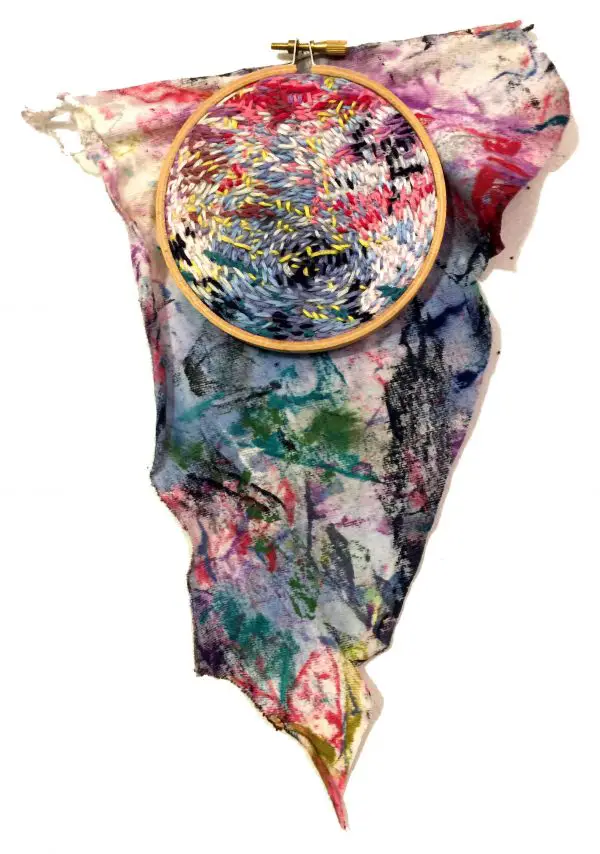
Her above comments reminded me of textile practices, ones which relate to repair such as Boro, a Japan based concept which we have written about before and have reviewed books which are centred on this subject like make thrift mend.
She goes on to tell us:
Years later, these rags are my teachers. I have an agreement that as I stitch I will follow each rag’s structure and design. Each rag demands a different color scheme and approaches to the direction, length and shape of each stitch. In honoring the formation of each rag, I find beauty in what would ordinarily be discarded.
So no pattern copying here! It is all about the art of the stitch and letting it tell the story, inspired by the cloth or rag it sits on.
A Painterly Start
Brown has always loved to paint, although she was brought up with family who were interested in tactile subjects, such as quilting. Her grandmother even had a go at making her barbie clothes, so there was definitely a background of textiles there, yet it seems that it took its time coming out in Brown herself. This reminded me of my own art history. My own mother was a dress maker, my grandmother on my fathers side a painter…..I always loved to paint, yet it was only as I got older that I began to appreciate embroidery and the tactile. I appreciate dress making now, yet it remains a challenge! So I do get this lengthy journey which Brown seems to have travelled down.
Turning to Stitch
Apparently it was only in recent times, when she began to travel away from home, that she began to look for new portable crafts to take with her. She wasn’t taught, she taught herself as she went along. Again I totally understand this, as I was primarily self taught too. It can have its positives and negatives, yet it can result in more unique personal work, which we certainly see in Brown’s case. She obviously loved nature as she began embroidering birds in the main. Yet as her methods and means became more successful, she began to play a little more, working in her paint work with the embroidery stitches she was creating.
I noticed too, how sometimes the Remnants are more one colour way than another, for example this piece:
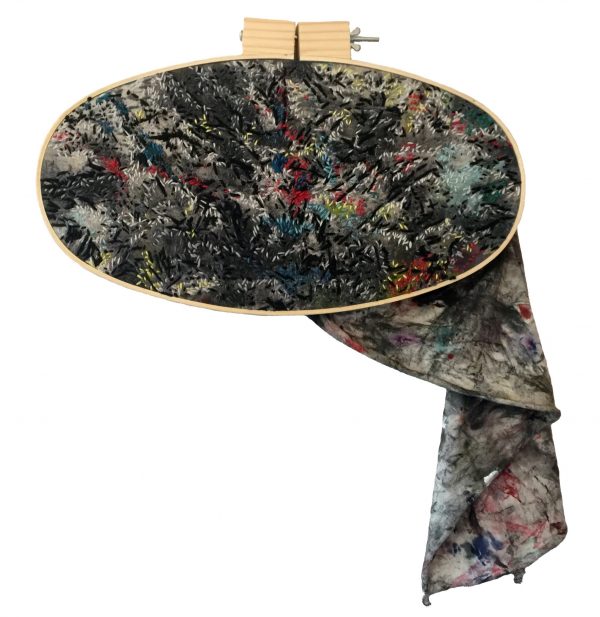
I see this as a nod back to her painterly roots and the ability to mix paint colours to achieve new tones and colour ways. She effectively does this is stitch, using the needle as her paint brush for the individual strokes she uses.
Boro is Beautiful
On our site, we often feature repair methods such as Boro and Sashiko , two methods which inspired this artist too. I can see the relation between her work and these methods, as with Boro and Sashiko, you can work very personally, you can be in control of the stitch and build it up or pair it down, very like you can with a paint brush – the tools are simply different. It is also a great method for those new to embroidery, as it steps away from the ‘perfect’ and centres more on the meaning and reason for the stitch itself. With Boro, which you can read more about in books like the one we reviewed here The Art Of Necessity, it’s all about repair and mending, using what you have around you, rather than the focus on fancy stitches or squeaky clean equipment. Looking at Brown’s work, it suits her style, as really with paint, you can only control the outcome so much.
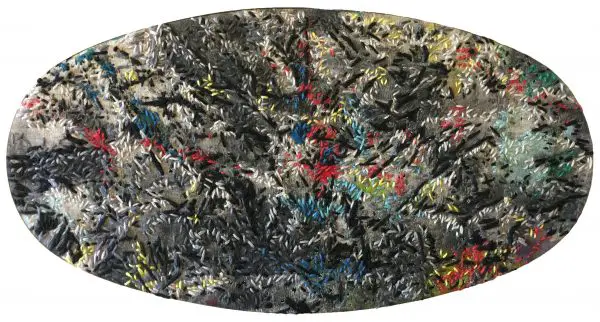
The very fact that she uses her rags and pre-loved clothing relates well to boro too, it is that ability to reuse, repair, mend…..which can make work stronger in meaning not weaker.
Often we hear of fine art and textile art being seperated and compared. This is such an old way of looking at art. Let art be just art, appreciate it for what it is. We will all be inspired by something different, maybe it is your background or history, or maybe you just like making. Don’t overthink it.
Learn More, See More
She has a website where you can view more of her work.
In the meantime, why not think about how you can use your own background and history as a spring board for your own textile art?

